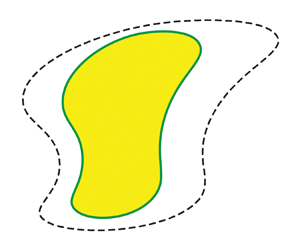No CrossRef data available.
Article contents
The viscous force and torque on a closed irrotational surface
Published online by Cambridge University Press: 16 May 2024
Abstract

The force and torque on a solid body in a viscous potential flow are often taken to be independent of viscosity. Joseph et al. (Eur. J. Mech. B/Fluids, vol. 12, 1993, pp. 97–106; J. Fluid Mech., vol. 265, 1994, pp. 1–23) proved that this holds for (i) the force (not the torque) in any two-dimensional flow, and (ii) the drag force experienced by a purely translating three-dimensional body. The remaining components of the force and torque, along with general three-dimensional flows, were not considered. Importantly, the flow was assumed to be unbounded and irrotational everywhere. We eliminate this rarely satisfied assumption and consider the viscous force and torque experienced by any closed surface where the flow is irrotational locally; this can include a body's surface. Any vorticity distribution is permitted away from the closed irrotational surface. In so doing, we complete the analysis of Joseph et al. for all components of the viscous force and torque in two and three dimensions and enable application to real flows that inevitably contain regions of vorticity.
JFM classification
- Type
- JFM Papers
- Information
- Copyright
- © The Author(s), 2024. Published by Cambridge University Press





